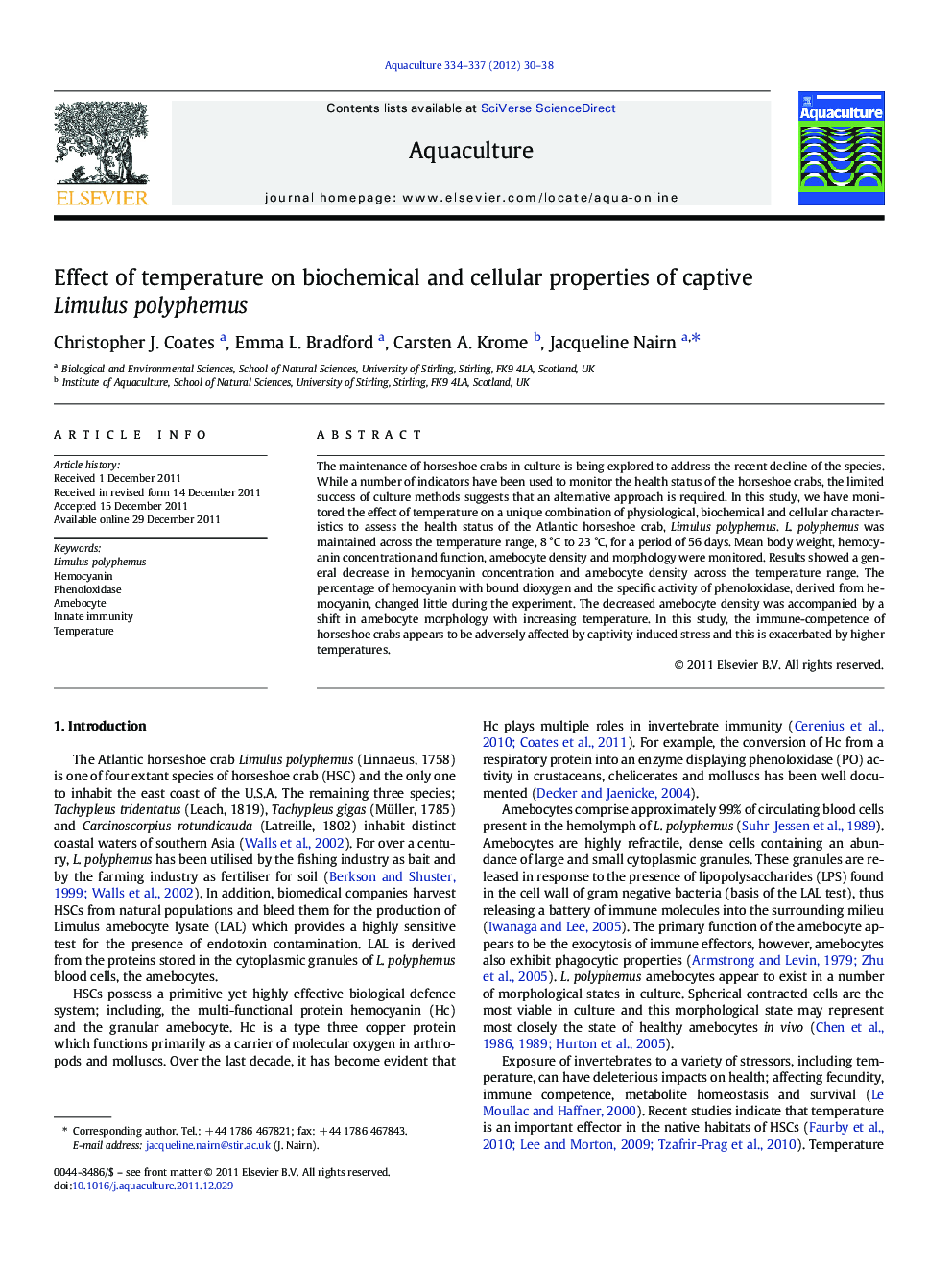| Article ID | Journal | Published Year | Pages | File Type |
|---|---|---|---|---|
| 2422697 | Aquaculture | 2012 | 9 Pages |
The maintenance of horseshoe crabs in culture is being explored to address the recent decline of the species. While a number of indicators have been used to monitor the health status of the horseshoe crabs, the limited success of culture methods suggests that an alternative approach is required. In this study, we have monitored the effect of temperature on a unique combination of physiological, biochemical and cellular characteristics to assess the health status of the Atlantic horseshoe crab, Limulus polyphemus. L. polyphemus was maintained across the temperature range, 8 °C to 23 °C, for a period of 56 days. Mean body weight, hemocyanin concentration and function, amebocyte density and morphology were monitored. Results showed a general decrease in hemocyanin concentration and amebocyte density across the temperature range. The percentage of hemocyanin with bound dioxygen and the specific activity of phenoloxidase, derived from hemocyanin, changed little during the experiment. The decreased amebocyte density was accompanied by a shift in amebocyte morphology with increasing temperature. In this study, the immune-competence of horseshoe crabs appears to be adversely affected by captivity induced stress and this is exacerbated by higher temperatures.
► A range of indicators used to assess health status of L. polyphemus in aquaculture. ► Hemocyanin (Hc) concentration & amebocyte density decreased with temperature increase. ► The ratio of amebocyte morphologies changed with temperature. ► Activity of Hc & phenoloxidase (derived from Hc) changed little with temperature. ► Findings of significance for monitoring health status of L. polyphemus in aquaculture.
